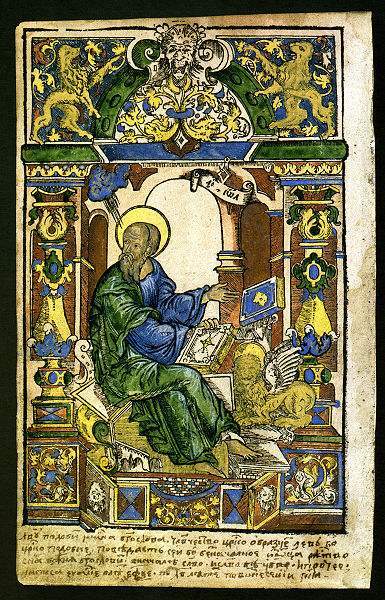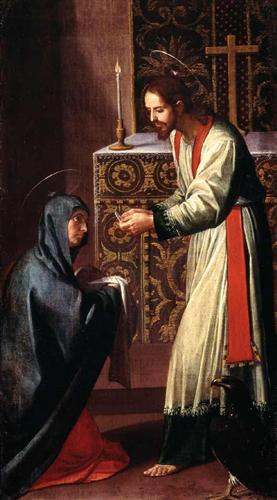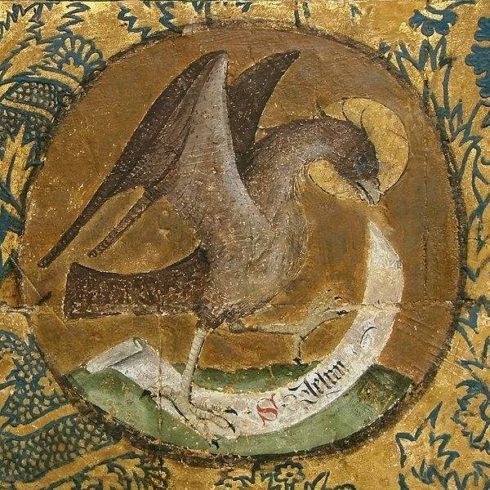St. John the Apostle and Evangelist
Happy Feast Day!
Styled in the gospel, The beloved disciple of Christ, and called by the Greeks The Divine, he was a Galilean, the son of Zebedee and Salome, and younger brother to St. James the Great, with whom he was brought up to the trade of fishing. From his acquaintance with the high-priest Caiphas, St. Jerome infers that he was a gentleman by birth; but the meanness of his father’s trade, and the privacy of his fortune sufficiently prove that his birth could not much distinguish him in the world, neither could his education give him any tincture of secular learning. His acquaintance with the high-priest may be placed to some other account. Nicephorus Calixtius, a modern Greek historian of the fourteenth century, (in whom, amidst much rubbish, several curious anecdotes are found,) says, we know not upon what authority, that St. John had sold a paternal estate to Annas, father-in-law to Caiphas, a little before the death of our Lord.
Before his coming to Christ he seems to have been a disciple to John the Baptist, several thinking him to have been that other disciple that was with St. Andrew, when they left the Baptist to follow our Saviour; [1] so particularly does our Evangelist relate all the circumstances, through modesty concealing his own name, as in other parts of his gospel. He was properly called to be a disciple of our Lord, with his brother James, as they were mending their nets, [2] on the same day, and soon after Jesus had called Peter and Andrew. These two brothers continued still to follow their profession, but upon seeing the miraculous draught of fishes, they left all things to attach themselves more closely to him. [3]
Christ gave them the surname of Boanerges, or sons of thunder, [4] to express the strength and activity of their faith in publishing the law of God, without fearing the power of man. This epithet has been particularly applied to St. John, who was truly a voice of thunder in proclaiming aloud the most sublime mysteries of the divinity of Christ. He is said to have been the youngest of all the apostles, probably about twenty-five years of age, when he was called by Christ; for he lived seventy years after the suffering of his divine master. Piety, wisdom, and prudence equalled him in his youth to those who with their grey hairs had been long exercised in the practice and experience of virtue; and, by a pure and blameless life he was honourable in the world. Our divine Redeemer had a particular affection for him above the rest of the apostles; insomuch, that when St. John speaks of himself, he saith, that he was The disciple whom Jesus loved; and frequently he mentions himself by this only characteristic; which he did not out of pride to distinguish himself, but out of gratitude and tender love for his blessed Master. Humility suffered him not to mention any of his other great privileges; but tenderness and love made him never forget, but on every occasion to repeat this title which was the strongest motive to inflame his own love of his Saviour, who, without any merit on his side, had prevented him by such distinguishing love.
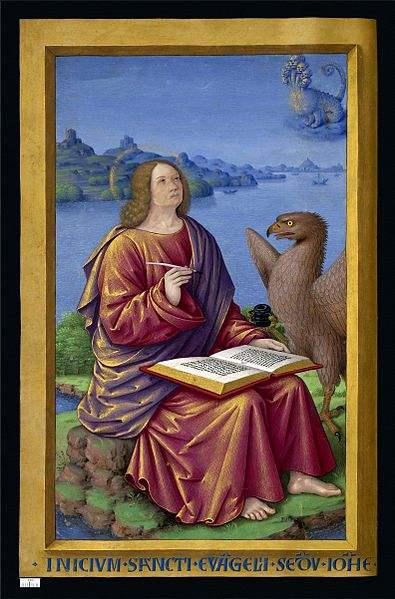
St. John the Evangelist, pictured with an eagle, in exile on the isle of Patmos, writing about the many visions he had.
If we inquire into the causes of this particular love of Christ towards him, which was not blind or unreasonable, the first was doubtless, as St. Austin observes, the love which this disciple bore him: secondly, his meekness and peaceable disposition, by which he was extremely like Christ himself: thirdly, his virginal purity. For St. Augustine tell us [5] that, “The singular privilege of his chastity rendered him worthy of the more particular love of Christ, because being chosen by him a virgin, he always remained such.” St. Jerome scruples not to call all his other privileges and graces the recompence of his chastity, especially that which our Lord did him by recommending in his last moments his virgin mother to the care of this virgin disciple. [6] SS. Ambrose, Chrysostom, Epiphanius, and other fathers frequently make the same reflection.
Christ was pleased to choose a virgin for his mother, a virgin for his precursor, and a virgin for his favourite disciple: and his church suffers only those who live perfectly chaste to serve him in his priesthood, where they daily touch and offer his virginal flesh on his holy altar. In heaven virgins follow the spotless Lamb wherever he goes. [7] Who then can doubt but purity is the darling virtue of Jesus? who feeds amongst the lilies [8] of untarnished chastity. For he who loves purity of heart, will have the king his friend. [9] Another motive of the preference which Jesus gave to this apostle in his intimacy and predilection, was his perfect innocence and simplicity without guile in his youth. Virtue in that age has peculiar charms to Christ, and is always a seed of extraordinary graces and blessings.
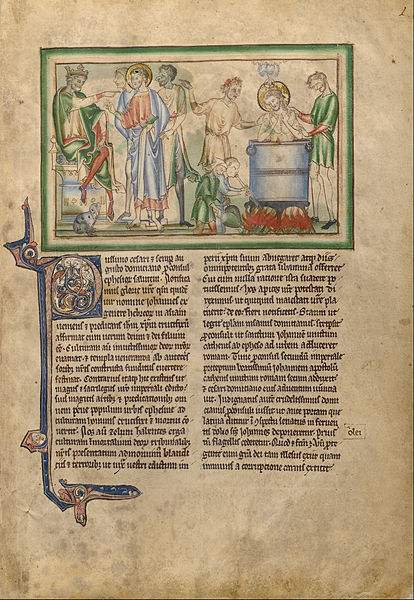
Emperor Domitian Speaking to Saint John the Evangelist and Saint John the Evangelist in a Vat of Boiling Oil.
Note 1. John i. 37. S. Chrys. hom. 17, in Joan. S. Epiph. hær. 51.
Note 2. Matt. iv. 2.
Note 3. Luke v. 11.
Note 4. Mark iii. 17.
Note 5. S. Aug. Hom. 124, in Joan.
Note 6. S. Hier. l. 1, in Jovinian. c. 14.
Note 7. Apoc. xiv. 4.
Note 8. Cant.
Note 9. Prov. xxi. 11.
See Tillemont, t. 1, p. 330. Calmet, t. 7 et 8. Ceillier, t. 1, p. 364. Reading, etc.
(adapted from: The Lives of the Saints, by Rev. Alban Butler (1711–73). Volume XII: December, pp. 779-780)

